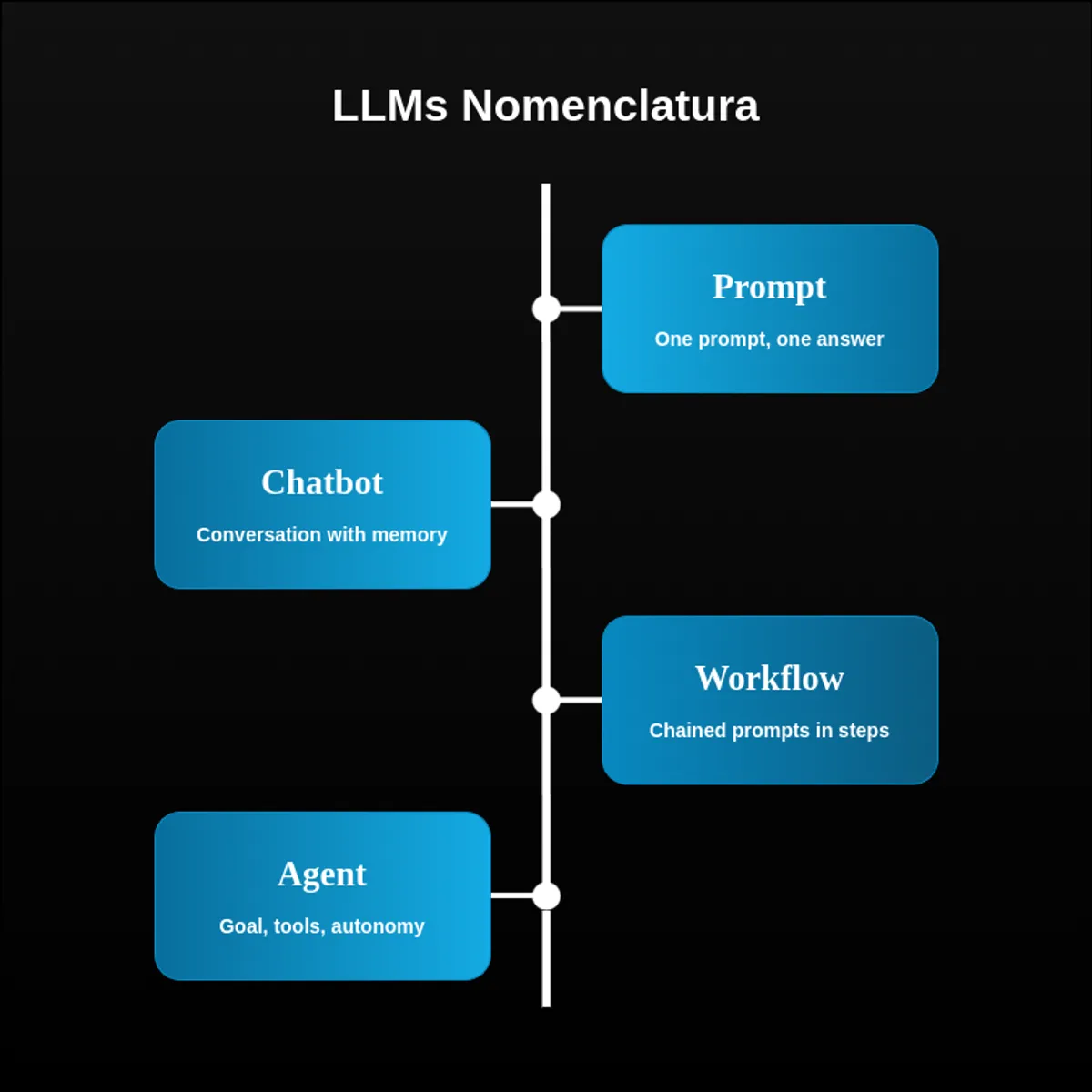Whenever I talk with a client, a prospect, or a colleague, there’s always a moment when the word “agent” comes up. The problem? It doesn’t mean the same thing to everyone. For some, it’s just a chatbot. For others, a prompt pipeline. And for a few, it’s a fully autonomous AI.
We end up in discussions where everyone thinks they’re talking about the same thing… but they’re not. To avoid these misunderstandings, I’ve developed a habit: I always start with a short clarification. Before diving into the discussion, I sketch out a quick diagram on a whiteboard and explain this nomenclature. It makes sure we all speak the same language and avoids the classic confusion:
“I want an agent!” — Okay, but which one of these four types of systems do you really want?
1. Prompt-based systems
A user provides input, the system structures a prompt around it, sends it to the model, and gets a single response back.
Example:
A product description generator: you type “blue trail running shoes, comfortable, durable” and it outputs marketing copy. It’s basically a simple Python script calling the OpenAI API once.
These systems don’t do anything beyond packaging your input into a prompt and sending it for inference.
2. Chatbots
Here, the system is about allowing users to chat in natural language with a LLM. The conversation history can be preserved, enabling continuous dialogue. You can enrich it with RAG (Retrieval-Augmented Generation), meaning the system pulls in external information (knowledge bases, FAQs, internal docs) to improve answers.
Examples:
- ChatGPT (in its classic form).
- A customer support bot that answers questions by pulling from product documentation.
The defining principle: it’s a conversation, with message chaining, always reactive to the user.
3. Workflow-based systems
Here, we move beyond linearity. Multiple prompts are executed in sequence or in parallel, following a predesigned flow.
Examples:
- Youtube Summary (my own service):
- The system first categorizes the video.
- It splits it into segments (“chunks”).
- Each chunk is summarized in parallel.
- A final step compiles the overall summary.
We call it a workflow when there’s a defined logical sequence, where each stage is one or more prompts chained together.
4. Agents (the real ones)
Only here can we truly talk about agents. An agent isn’t just a sequence of prompts. It receives an objective, has access to a set of tools (APIs, web browsing, databases, calculators), and—crucially—it can choose its own plan of action, iterate until the goal is reached, and decide whether the work is finished.
Example:
- An agent tasked with “find the 3 best home security cameras compatible with Home Assistant”:
- It decides to run a web search.
- It browses several websites.
- It compares models.
- It may use a “calculator” tool to compare prices in different currencies.
- It stops only once it has a satisfactory shortlist.
The difference from workflows is fundamental: a workflow follows a predefined path. An agent discovers the path along the way.
Conclusion
Not everything is an agent.
- A structured prompt isn’t an agent.
- A chatbot isn’t an agent either.
- A sophisticated workflow isn’t one either.
An agent is when the system has tools, receives a goal, plans, acts, and self-evaluates.
By putting a bit of order back into the terminology, we avoid miscommunication and clarify the true value of each approach.
 Valérian de Thézan de Gaussan
Valérian de Thézan de Gaussan 